Baker Academic Old Testament Studies (19 vols.)
Digital Logos Edition

Overview
The Baker Academic Old Testament Studies contains 19 volumes of recent, in-depth Old Testament commentary and research. This collection explores Christianity’s roots, examining the character of God, the cultural and historical contexts in which Old Testament books were written, and the formation of the canon. Authors such as Andrew Sloane and Victor H. Matthews take on the Old Testament’s essential topics—ethics, for example, and the idea of narrative—rounding out the collection’s study of these essential and foundational texts.

Key Features
- Analysis of the Old Testament canon
- Interpretation and exegesis of the Old Testament texts
- Insight and application of Mosaic law
Product Details
- Title: Baker Academic Old Testament Studies
- Publisher: Baker Academic
- Volumes: 19
- Pages: 4,386
- Resource Types: Topical, Synopsis/Survey
- Topic: Old Testament Studies
Individual Titles
- Interpreting the Old Testament: A Guide for Exegesis by Craig C. Broyles
- The Old Testament: Text and Context, 3rd. ed., by Victor H. Matthews and James C. Moyer
- Old Testament Turning Points: The Narratives That Shaped a Nation by Victor H. Matthews
- Making Sense of the Old Testament: Three Crucial Questions by Tremper Longman III
- The Goodly Fellowship of the Prophets: The Achievement of Association in Canon Formation by Christopher R. Seitz
- Creation Untamed: The Bible, God, and Natural Disasters by Terence E. Fretheim
- At Home in a Strange Land: Using the Old Testament in Christian Ethics by Andrew Sloane
- Getting the Old Testament: What It Meant to Them, What It Means for Us by Steven L. Bridge
- The Literary Structure of the Old Testament: A Commentary on Genesis–Malachi by David A. Dorsey
- The Old Testament Roots of Our Faith, rev. ed., by Paul J. Achtemeier and Elizabeth Achtemeier
- Reading the Historical Books by Patricia Dutcher-Walls
- Christians at the Border, 2nd ed. by M. Daniel Carroll R.
- Invitation to the Psalms: A Reader’s Guide for Discovery and Engagement by Rolf A. Jacobson and Karl Jacobson
- Old Testament Commentary Survey, 5th ed. by Tremper Longman III
- Old Testament Theology: Reading the Hebrew Bible as Christian Scripture by R.W.L. Moberly
- Old Testament Textual Criticism: A Practical Introduction by Ellis R. Brotzman
- The Faith of Israel: A Theological Survey of the Old Testament, 2nd ed. by William J. Dumbrell
- The Heart of the Old Testament: A Survey of Key Theological Themes, 2nd ed. by Ronald Youngblood
- This Strange and Sacred Scripture: Wrestling with the Old Testament and Its Oddities by Matthew Richard Schlimm
This title is included in the following collections
You can save when you purchase this product as part of a collection.
Baker Academic Old Testament B...
$1,049.99$1,049.99Baker Academic Biblical Studie...
$3,999.99$3,999.99Baker Ultimate Collection 2022...
$38,273.89$30,599.99
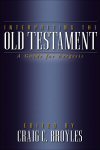
Serious students of the Old Testament quickly realize that interpreting ancient Scripture is inherently difficult. Understanding the literature of the Old Testament poses unique challenges and requires methods very different from those used to interpret the New Testament. Interpreting the Old Testament is designed to provide students a useful methodology for interpreting Old Testament texts. The authors, all leading evangelical scholars, were chosen because of their particular expertise in the various aspects of the interpretive process; they offer insight and wisdom, helping you unlock the Word. Not simply a book of theory, this work provides practical help to students as they seek to understand and apply the Old Testament.
A fine book for those who are beginning their journey into the serious study of the Old Testament. . . . This book will no doubt serve as a standard reference tool and textbook for years to come.
—Richard E. Averbeck, Trinity Evangelical Divinity School
Craig C. Broyles is a professor of religious studies at Trinity Western University, Canada. He is author of The Conflict of Faith and Experience: A Form-Critical and Theological Study of Selected Lament Psalms and co-editor of Writing and Reading the Scroll of Isaiah: Studies of an Interpretive Tradition.
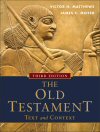
This new edition of a classroom standard provides students with an accessible introduction to the literature, history, and social context of the Old Testament. Written by two seasoned Old Testament professors, the book pays attention to methodology, archaeology, history, and literary genre and includes illustrations, sidebars, maps, and study questions.
The great strength of this book is, as suggested by the title, the blending of matters related to the text and the context of the Old Testament/Hebrew Bible. . . . This textbook does a fine job of preparing the student to read the OT/HB intelligently.
—Review of Biblical Literature
Victor H. Matthews is dean of the College of Humanities and Public Affairs and professor of religious studies at Missouri State University in Springfield, Missouri, where he has taught for more than 25 years. He is the author of numerous books, including The Old Testament: Text and Context, Studying the Ancient Israelites, and the bestselling Manners and Customs in the Bible.
James C. Moyer is a professor of religious studies at Missouri State University in Springfield, Missouri, and the author of numerous articles.
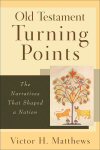
Adam and Eve, God’s covenant with Abraham, the deportation of Judah and their eventual return to Jerusalem—these are a few of the key Old Testament stories that serve as signposts for guiding readers through the Old Testament. According to Old Testament professor Victor Matthews, these stories are essential to the identity of Israel as God’s people.
Matthews identifies eight landmark stories that not only shaped Israelite identity but also continued to echo throughout the Old Testament as Israel grew into its role as the people of God. He examines the stories in detail, showing how they provide a foundation for later Old Testament stories and events. Helpful sidebars, a glossary, indexes, and a selected bibliography provide readers with tools for further exploration.
The author offers great insights in each chapter and does an exceptional job weaving together literary, sociological, and canonical perspectives as he explains each narrative. [The book] offers something for the seasoned scholar as well as the beginning student of OT studies. . . . Well worth the read.
—Journal of the Evangelical Theological Society
Victor H. Matthews is dean of the College of Humanities and Public Affairs and professor of religious studies at Missouri State University in Springfield, Missouri, where he has taught for more than 25 years. He is the author of numerous books, including The Old Testament: Text and Context, Studying the Ancient Israelites, and the bestselling Manners and Customs in the Bible.
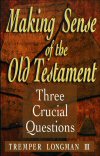
Though essential to the Christian faith, the Old Testament remains an enigma to many. Some view it as disjointed and difficult to understand, or as nothing more than a collection of archaic documents, irrelevant for Christians today. In clear and concise language, Tremper Longman addresses three questions to help resolve this problem:
- What are the keys to understanding the Old Testament?
- Is the God of the Old Testament also the God of the New Testament?
- How is the Christian to apply the Old Testament to life?
Christians face a number of obstacles to their understanding of the Old Testament; differences in culture, worldviews, traditions, language, and geography impede understanding of the ancient texts. And throughout the history of the church, there has been much debate concerning the differences between how God related to humans in the Old Testament and in the New. Longman points out false stereotypes Christians may encounter, demonstrating that the presentation of God is consistent across both Testaments. His work provides practical principles for achieving a fuller understanding of what the Old Testament says, and looks at each section—law, history, poetry, wisdom, and prophecy—explaining the issues involved in application to today’s Christian life.
Longman has written a nice primer with an evangelical approach to the topic at hand . . . The book would be a great resource for pastors who want to teach these topics to their congregations in a systematic and effective fashion. Longman’s material provides good apologetics that may be used to counter those who errantly claim that Jesus is starkly different from God in the Old Testament.
—W. H. Bellinger Jr., W. Marshall and Lulie Craig Professor of Bible, Baylor University
Tremper Longman III is the Robert H. Gundry Professor of Biblical Studies at Westmont College in Santa Barbara, California. Before coming to Westmont, he taught at Westminster Theological Seminary in Philadelphia for 18 years. He has authored or coauthored numerous books, including An Introduction to the Old Testament, How to Read Proverbs, and commentaries on Daniel, Ecclesiastes, Proverbs, Jeremiah and Lamentations, and Song of Songs.
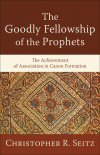
Just below the surface of any Christian view of the Bible is the knotty issue of the biblical canon. How and when was it decided which books would make up the Bible? What makes a book canonical?
Respected Old Testament scholar Christopher Seitz has long been at the forefront of canon research. His particular interest has been the prophets—the interrelationships among the prophetic writings provide important evidence that any understanding of canon must incorporate. In this volume, Seitz delves more deeply into the prophetic corpus, showing how the Old Testament fits into the canon’s development. Drawing on the latest research on the biblical prophets, Seitz challenges current understandings of the formation of the Christian canon and reveals canonical connections woven into the fabric of the prophetic books. He argues that the Law and the prophets cohere and give shape to the subsequent Christian canon.
The Goodly Fellowship of the Prophets takes the discussion concerning Old Testament canon formation to another level. Seitz mounts an impressive array of arguments against standard conceptualities of Old Testament ‘canon development’ as he demonstrates that the early church never operated without a canon. With great scholarly care, insight, and breadth, Seitz argues that the material form of the Old Testament canon is a significant hermeneutical matter that demands special attention. This is a work that should shape the discussion within the discipline.
—Mark S. Gignilliat, assistant professor of divinity, Beeson Divinity School, Samford University
Christopher R. Seitz is a professor of biblical interpretation at Wycliffe College, University of Toronto, in Toronto, Ontario. He previously taught at the University of St. Andrews and Yale University. He is the author or editor of numerous books, including Figured Out, Prophecy and Hermeneutics, and commentaries on Isaiah 1–39 and 40–66.
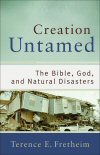
Earthquakes, floods, tsunamis, and hurricanes have plagued the earth throughout history. What is God’s role in natural disasters and the human suffering they cause? This is a vexing perennial question. When destruction occurs due to “forces of nature,” is the hand of God visiting judgment on a particularly sinful people, or has God simply left humanity to fend for itself?
The Bible often speaks of natural disasters, but its insights have been insufficiently explored. In Creation Untamed, leading Old Testament theologian Terence Fretheim offers fresh readings of familiar Old Testament passages—creation, the flood, Sodom and Gomorrah, the plagues of Egypt, the suffering of Job, and the biblical laments—to provide biblical resources for working through this topic. He presents an understanding of creation as good, but not perfect; examines the human experience of suffering; and explores the role of humans in the creative process. Fretheim shows the God of the Bible to be a compassionate, suffering, relational God, one we can turn to in prayer in times of disaster.
Rich in biblical insight, theological nuance, and pastoral wisdom, this accessibly written volume will benefit anyone thinking about the God of the Bible in relation to human suffering. It will appeal to students in courses on the Bible, theology, or pastoral care as well as to pastors and thoughtful lay readers.
Fretheim dives headfirst into the swirling storm of practical biblical and theological questions that we all ask about God, tragedy, and suffering. Highly recommended!
—Dennis Olson, Princeton Theological Seminary
Terence E. Fretheim is Elva B. Lovell Professor of Old Testament at Luther Seminary in St. Paul, Minnesota, where he has taught for more than 50 years. He is the author of more than 20 books, including commentaries on Genesis, Exodus, First and Second Kings, and Jeremiah and God and World in the Old Testament, The Suffering of God, and The Pentateuch.

The Old Testament is a problem for many Christians. Some find it puzzling, or even offensive; others seem to glibly misuse it for their own ends. There are few resources aimed at enabling ordinary Christians to understand the OT and use it in their lives as followers of Jesus.
In At Home in a Strange Land: Using the Old Testament in Christian Ethics, Andrew Sloane seeks to address this need. He outlines some of the problems that ordinary Christians face in reading the Old Testament as part of Christian Scripture and provides a framework for interpreting the Old Testament and using it in Christian ethics. He identifies some of the key biblical texts of both the Old Testament and the New Testament that inform Christian ethics and challenge us to live as God’s people. Using the paradigm of learning to travel in unfamiliar places, Sloane seeks to equip the reader with tools for understanding many of the puzzling and difficult passages found in the Old Testament. In sum, the book aims to “rehabilitate” the Old Testament for ordinary, even skeptical, twenty-first century Christians.
Unlike many other books that address these topics, Sloane’s work brings together questions of interpretation and “ethical application” in one book aimed at lay people.
How can a Christian read the Old Testament and find in it moral value for the present day? How can this be done without falling into the pitfall of naïve legalism . . . or unthinking rejection . . . ? [Sloane] deftly handles some of the most challenging issues raised by Old Testament texts (e.g., slavery and holy war) and draws out their contemporary moral value. . . . Not everyone . . . will agree with every detail or conclusion in the book. But to differ a good argument is needed. I am the better equipped to engage my world having read this book, and I commend it with enthusiasm.
—Graham A. Cole, professor of biblical and systematic theology, Trinity Evangelical Divinity School
Andrew Sloane joined the faculty of Morling College (the Baptist Theological College of NSW) in 2002 as lecturer in Old Testament and Christian thought. He initially trained as a medical doctor before turning to theology. He completed his theological education at Morling College and has worked in Baptist churches in Sydney and Newcastle and lectured at Ridley College in Melbourne. He has written on Old Testament, interpretation, ethics and philosophy.
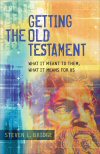
As readers of texts written in antiquity we frequently find ourselves in the position of one who overhears a conversation without the benefit of context. The likelihood of humorous (or tragic) misunderstanding is palpable. In Getting the Old Testament: What It Meant to Them, What It Means for Us, Steven Bridge examines a number of important texts and genres found in the Old Testament. By bringing what is known of their original historical and literary context to light, he clearly demonstrates how important it is to know the cultural background of those to whom a text was originally addressed. Bridge helps us as modern readers to grasp the intended significance of these ancient texts.
Using modern illustrations from Bart Simpson to fortune cookies, and discussing texts from Genesis to Jonah to Ecclesiastes, Bridge succeeds in making difficult texts come alive for the reader and shows how they practically apply to modern life. Each chapter begins with a story, event, or illustration that draws the reader into Bridge’s point with regard to the clearest understanding of a particular text or given group of texts. The most poignant of these illustrations is found at the beginning of his chapter on the book of Job, in which he begins with the story of Lou Gehrig and the disease that took his life, ALS (known more commonly as Lou Gehrig's Disease) and ends with his own father’s death from ALS.
An annotated list of suggested readings as well as subject and scripture indexes make this a practical book for college classes.
Steve Bridge’s Getting the Old Testament is a fun and easy way to get a good overview of how modern biblical studies have opened up our understanding of the Old Testament. He combines contemporary examples, light but scholarly descriptions, and many charts to craft a very readable understanding of the development and purpose of the Hebrew Scriptures.
—Lawrence Boadt, CSP, emeritus professor of Scripture studies, Washington Theological Union
Steven L. Bridge is a professor of theology and the chair of the department at Saint Joseph’s College of Maine. He has taught biblical studies at parishes, high schools, colleges, and universities throughout the United States for over a decade.
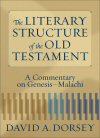
In modern writing, a variety of written markers—italics, bold type, punctuation, parentheses, and so forth—are used to indicate emphasis and clarify meaning. The authors of the Old Testament could not rely on such devices since their writings were originally composed for oral presentation. They instead used literary structure to highlight certain ideas and to convey meaning and emphasis accurately. Unfortunately, as we read the Old Testament we frequently overlook this inherent literary structure. What we need is a guide to help us see the literary structure that permeates the Old Testament and clarifies the meaning of each Old Testament book. David Dorsey has provided such a guide.
The author opens the book with a brief historical survey of the various approaches to understanding the structure of the Old Testament. He examines what is meant by the term literary structure and gives examples of how the structure of a given text illuminates the author’s writing, meaning, and purpose.
Dorsey then proceeds book by book through the entire Old Testament identifying the structure and offering commentary on how that structure clarifies the meaning of the text. He illuminates the big picture of each book, providing a framework for further study. No pastor, teacher, or student should embark upon the study of an Old Testament text without consulting this indispensable guide.
Herman Gunkel and the form critics have taught us that the meaning of texts cannot be divorced from the literary genres and forms in which they are composed. More recently the symbiotic connections between meaning and literature on a more macro-structural level have come to be appreciated. David Dorsey has now carried this important insight logically forward in his brilliant analyses and syntheses of not only Old Testament passages but of whole books and collections of books. With intuitively artistic sensitivity to texts in their wholeness, Dorsey has provided for the scholar and layman alike a fresh way of reading the sacred literature. He avoids the twin pitfalls of not seeing the forest for the trees or failing to discover the trees because of a focus on the forest alone. The trees are here all clearly exposed but not in isolation—they exist in such patterns and relationships as to produce a forest of wondrous beauty. Bible study will never be the same again for anyone who takes advantage of the creative insights afforded in this remarkable volume.
—Eugene H. Merrill, Distinguished Professor of OT Studies, Dallas Theological Seminary
David A. Dorsey is professor of Old Testament at the Evangelical School of Theology in Myerstown, Pennsylvania. He is the author of The Roads and Highways of Ancient Israel.
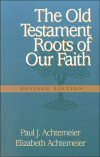
The Old Testament Roots of Our Faith
- Authors: Paul J. Achtemeier and Elizabeth Achtemeier
- Edition: Revised
- Publisher: Baker Academic
- Publication Date: 1994
- Pages: 160
The heart of the Christian faith rests upon the confession that “Jesus is Lord,” yet faithful Christians sometimes overlook the fact that the Jesus’ lordship is firmly rooted in the Old Testament’s promises and prophecies. Moreover, knowing Jesus more fully entails knowing the story of God’s salvation planned before the foundation of the world. Modern readers tend to forget that the declaration that “before Abraham was I am” underscores the continuity between the promise to Abraham and its fulfillment in Christ. Acquiring a basic understanding of the relationship between the Old and New Testaments with respect to salvation’s drama will enrich every reader’s faith and appreciation for the Scriptures.
Elizabeth Achtemeier was an adjunct professor of Bible and homiletics at Union Theological Seminary in Virginia. She has authored a number of books, including Nature, God, and Pulpit and Preaching from the Old Testament.
Paul J. Achtemeier is the former Herbert Worth and Annie H. Jackson Professor of Biblical Interpretation at Union Theological Seminary, Richmond, Virginia. He has served as the president of both the Society of Biblical Literature and the Catholic Biblical Association. He has authored a number of books, including 1 Peter (Hermeneia) and is the general editor for Harper's Bible Dictionary.
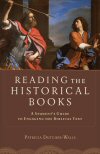
The conventions of contemporary history writing are quite different from those of ancient Israelite writers, making biblical history often difficult to grasp. Patricia Dutcher-Walls offers basic orientation to the genre and conventions of the Old Testament historical books, helping students become careful and attentive readers. With many ancient and contemporary examples, this book introduces students to some of the phenomena they will encounter in the historical books, and it provides strategies for understanding their significance. The goal is to make further reading and study of Scripture more informed and sensitive. Sidebars, discussion questions, and further reading suggestions are also included.
Somebody once famously wrote, ‘The past is a foreign country: they do things differently there.’ For those coming to serious study of the Bible for the first time, there cannot be any more important lesson than to understand how to read the Bible’s ancient historical records faithfully on their own terms. They are not always the same as ours. You will not find a better or more sympathetic introductory book than this one to point you in the right direction.
—H.G.M. Williamson, Regius Professor of Hebrew and Ordinary Student of Christ Church, University of Oxford
Patricia Dutcher-Walls holds an MDiv from Harvard Divinity School and a DTh from Graduate Theological Union in Berkeley, California. From 1995 to 2004, she was assistant then associate professor of Hebrew Scripture/Old Testament at Knox College. She is ordained in the Presbyterian Church and has given numerous workshops, lectures, seminars, and courses to adults and youth in the church. She is the author of three books: Jezebel: Portraits of a Queen, The Commandments: For a Blessed Life, and Narrative Art, Political Rhetoric.
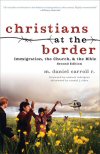
Immigration is one of the most pressing issues on the national agenda. In this accessible book, an internationally recognized immigration expert helps readers think biblically about this divisive issue, offering accessible, nuanced, and sympathetic guidance for the church. As both a Guatemalan and an American, M. Daniel Carroll R. is able to empathize with both sides of the struggle, and he argues that each side has much to learn.
This updated and revised edition reflects changes from the past five years, responds to criticisms of the first edition, and expands sections that have raised questions for readers. It includes a foreword by Samuel Rodríguez and an afterword by Ronald Sider. This timely, clear, and compassionate resource will benefit all Christians who are thinking through the immigration issue.
M. Daniel Carroll R.’s second edition of Christians at the Border could not be coming out at a more crucial time in our country’s history, when evangelicals of all political stripes are joining together to push for sensible immigration reform. This updated version reinforces the biblical call for Christians to ‘welcome the stranger’ and further lays out the case for viewing our country’s immigration policy through the lens of Scripture. As the son of an immigrant, as an academic, and as a theologian, Carroll deftly paints a picture of the struggles and merits of Hispanic immigration and why the American church benefits by embracing these brothers and sisters. This is a must-read for any Christian who is interested in immigration reform.
—Jim Wallis, president and founder, Sojourners
M. Daniel Carroll R. is a professor of Old Testament at Denver Seminary and an adjunct professor of Old Testament at El Seminario Teologico Centroamericano in Guatemala City.
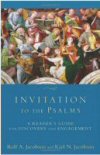
The Book of Psalms is perhaps the most cherished book in the Old Testament. In this lively volume, two experienced teachers invite students to read and explore the Psalter and roam widely among its poems. The book introduces the dynamics of the biblical text, helping students become careful and attentive readers. It covers how to read Hebrew poetry, the Psalter’s basic genres, the idea of “the psalmist,” the Psalm’s theology and metaphorical world of the Psalms. Sidebars, discussion questions, and plenty of examples enhance the reading experience. This clear and concise guide is accessible to all students of the Bible.
Invitation to the Psalms. . . . It is most readable, using literary insights from modern poetry to illuminate the character and message of the ancient psalms. It is up-to-date in its scholarship without overburdening the reader with technicalities. In short it is an ideal introduction to interpreting the psalms for individual or classroom use.
—Gordon Wenham, tutor in Old Testament, Trinity College Bristol
Rolf A. Jacobson is associate professor of Old Testament at Luther Seminary in St. Paul, Minnesota, and an ordained pastor. His teaching interests include the Psalms, the Old Testament prophets, biblical poetry, biblical theology, and biblical narrative.
Karl Jacobson is assistant professor of religion at Augsburg College in Minneapolis, Minnesota, and an ordained pastor.
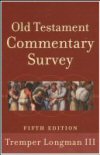
Leading Old Testament scholar Tremper Longman III provides students with expert guidance on choosing a commentary for any book of the Old Testament. The fifth edition has been updated to assess the most recently published commentaries. Longman lists a number of works available for each book of the Old Testament, gives an indication of their emphases and viewpoints, and evaluates them. The result is a balanced, sensible guide for those who preach and teach the Old Testament and need help choosing the best tools. Students and preachers will find this book crucial in building their reference libraries.
This little book is an excellent aid for the study of the Old Testament. It is more than a bibliography; it is an annotated listing of many of the important resources available in English. . . . A ‘must’ for any serious student of the Bible.
—Dianne Bergent, The Bible Today
Tremper Longman III is the Robert H. Gundry Professor of Biblical Studies at Westmont College in Santa Barbara, California. Before going to Westmont, he taught at Westminster Theological Seminary in Philadelphia for 18 years.
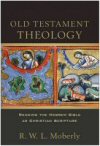
Old Testament Theology: Reading the Hebrew Bible as Christian Scripture
- Author: R.W.L. Moberly
- Publisher: Baker Academic
- Publication Date: 2013
- Pages: 320
Top Old Testament theologian R.W.L. Moberly is known for accessible and provocative writing. Old Testament Theology: Reading the Hebrew Bible as Christian Scripture questions what is necessary to understand the Hebrew Bible as a fundamental resource for Christian theology. This volume offers a creative example of theological interpretation, modeling a way of analyzing the Old Testament that considers the nature of the ancient biblical text while also questioning the difficulties that arise as believers study in a contemporary context.
Moberly offers an in-depth study of key Old Testament passages, highlighting enduring existential issues in the Hebrew Bible and discussing Jewish readings alongside Christian readings. The volume, an overview of Old Testament Scripture, discusses most of the major topics of Old Testament theology. Moberly also demonstrates a Christian approach to reading the Old Testament that combines the priorities of both scholarship and faith.
R.W.L. Moberly earned his PhD from the University of Cambridge. He is a professor of theology and biblical interpretation at Durham University in Durham, England. He is the author of seven books, including The Theology of the Book of Genesis and Prophecy and Discernment.
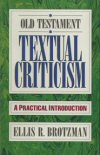
Old Testament Textual Criticism provides the basic knowledge for students to get the most from Biblia Hebraica Stuttgartensia: SESB 2.0 Version with Apparatus and WIVU Introduction.
Dr. Ellis Brotzman explains the significance of scripts and writings of the ancient Near East, the Dead Sea Scrolls, and Hebrew manuscripts for students of Hebrew exegesis. Students are lead through the steps involved in using BHS and other resources to evaluate variant readings. Brotzman sheds light on the origin and nature of Hebrew texts and versions, thereby helping scholars, students, and pastors more fully understand the Old Testament.
Simplifies a lot of things that are found elsewhere but are difficult for most students to assimilate.
—Douglas Stuart, professor of Old Testament, Gordon-Conwell Theological Seminary
Ellis Brotzman is associate professor and chairman of the Old Testament department at Tyndale Theological Seminary, The Netherlands. He holds a PhD in Hebrew and Semitic languages from New York University. He is the author of Jonah: Computer Generated Tools for the Correlated Greek and Hebrew Texts
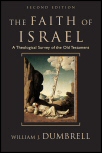
For years, William Dumbrell’s comprehensive survey, The Faith of Israel, has introduced students and pastors to the theological emphases of the Old Testament. Revised throughout with substantial new material, this new edition updates the book for today’s students.
Dumbrell traces the theological movement of each Old Testament book through the Hebrew canonical sequence of Law, Prophets, and Writings, “the manner in which Israel presented her faith.” He not only brings forth insightful points and themes within each book, but he also makes original and refreshing connections to themes in other Old Testament books. This in turn leads to a discussion of the theology of the entire Old Testament canon.
Dumbrell is a well-trained and highly seasoned scholar whose historical, exegetical, and theological skills are evident throughout this erudite volume. Every page has clear, careful explanations for those looking at the issues for the first time as well as cogent, well-documented arguments useful to the professional scholar. Dumbrell packs an enormous amount of theological acumen into the survey, paying constant attention to the great overall theological themes of Scripture, the individual theological details that give each passage and book their special value, and the historical-literary data. This is the very best sort of Old Testament survey—one that not only teaches facts about the Bible but also shows the purpose and meaning of what you are reading.
—Douglas Stuart, professor of Old Testament, Gordon-Conwell Theological Seminary
William J. Dumbrell (ThD, Harvard University) has taught at Moore Theological College in Sydney, Australia, Regent College in Vancouver, and Trinity Theological College in Singapore.
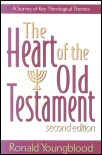
Ronald Youngblood’s concise guide to the central themes of the Old Testament has served students for 30 years. Now this frequently used textbook is available in its new edition through Logos Bible Software. The second edition features updated text, refined arguments, and is completely searchable with your digital library.
In The Heart of the Old Testament, Youngblood demonstrates the thematic unity of the Bible by tracing the development of nine key concepts through the Old Testament and into the New: monotheism, sovereignty, election, covenant, theocracy, law, sacrifice, faith, and redemption. These concepts constitute the very heart of the Old Testament.
It would be hard to imagine a better summary of the key themes of the Old Testament than the one found in this book. Dr. Youngblood blends an extraordinary knowledge of the Old Testament with an uncanny ability to express concepts clearly. The chapters are succinct, but filled with helpful background material and theological insight. This book comes from the pen of one America’s finest Old Testament scholars.
—Herb Wolf, professor of graduate theological studies, Wheaton College Graduate School
Ronald Youngblood (PhD, Dropsie College) is a professor of Old Testament and Hebrew at Bethel Seminary San Diego.

The Old Testament can seem strange and disturbing to contemporary readers. What should Christians make of Genesis 1–3, seemingly at odds with modern scientific accounts? Why does the Old Testament contain so much violence? How should Christians handle texts that give women second-class status? Does the Old Testament contradict itself? Why are so many Psalms filled with anger and sorrow? What should we make of texts that portray a wrathful God?
Combining pastoral insight, biblical scholarship, and a healthy dose of humility, gifted teacher and communicator Matthew Schlimm explores perennial theological questions raised by the Old Testament. He provides strategies for reading and appropriating these sacred texts, showing how the Old Testament can shape the lives of Christians today and helping them appreciate the Old Testament as a friend in faith.
Immerse yourself deeply in this book and you will find much food for thought from an author who has addressed intelligently and provocatively the questions that linger in your mind.
—Victor P. Hamilton, professor emeritus of Old Testament, Asbury University
Matthew Richard Schlimm is assistant professor of Old Testament at University of Dubuque Theological Seminary in Dubuque, Iowa. He previously taught at Duke Divinity School and has held various ministry positions in United Methodist churches. He is the author of From Fratricide to Forgiveness: The Language and Ethics of Anger in Genesis and coeditor of the CEB Study Bible.